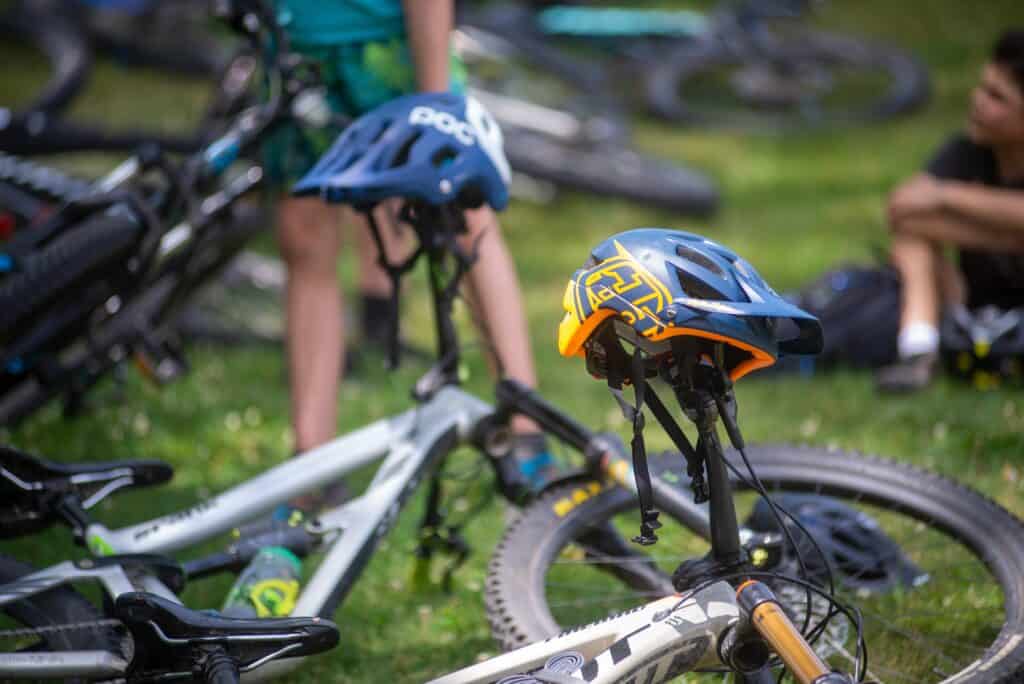7 Important Accessories for Mountain Biking

Mountain biking (MTB) is a great way to experience nature and stay in shape. There’s nothing quite like the adrenaline rush of shredding trails on your bike. But, if you’re a beginner, you’ll want to ensure you have these seven accessories before you head out. Together, they’ll make your time on the trails more rewarding while keeping you safe. You can find all these accessories—and a bike, if you haven’t bought one yet—at local shops like NEMBA’s website. Now, let’s look at the seven mountain biking accessories you’ll need before you tackle diverse and challenging trails like the ones available at Hale.
Helmet
A properly fitted helmet is your most important mountain biking accessory and piece of safety equipment. MTB helmets offer greater protection of your head’s occipital and temporal regions than traditional bike helmets. A full-face helmet provides extra protection for your face, chin, and mouth, which you’ll need for downhill riding. Research suggests that a high-quality helmet can reduce head injuries by 39% and facial trauma by 28%. Helmets come in various sizes, so it’s important to get one that fits your head. Helmets should fit snugly; with your helmet unclipped, you should be able to tip your head down and not have the helmet fall off. With your helmet clipped, there should be enough room to fit two fingers between the strap and your chin.
Shoes and Pedals
Your shoes are essential for bike control and performance. While you can wear any shoes while riding, a good pair offers many advantages. MTB shoes are rugged, hard-wearing, and stiff to improve power transfer to the pedals and wheels. Your pedals can be either flat or clip-in; this comes down to personal preference. Clip-in pedals allow you to use the pedal stroke to put down more power and the pulling motion to tackle steep climbs and complex trail features. Flat pedals are wide and strong to provide a solid platform and are typically fitted with pins to help with shoe grip. Consider how you’ll ride before making a purchase, and be sure to match your shoe with your pedal.
Clothing
MTB clothing is breathable and flexible so you can move around on the bike. It’s also often reinforced and made of more durable material to prevent ripping should you fall off. For your shorts, you’ll want something with at least one zipper pocket, a sturdy fastening system, and of some length to avoid chafing. Your jersey should be breathable, have extra space for protective padding, and be suitable for the climate you’ll ride in. As we move into the colder season, think about layers: You’ll want to regulate your body temperature based on your exertion level.
Gloves
MTB gloves are typically full-fingered with protection across the top of the hand and knuckles. When choosing a pair of gloves, consider fit, palm grip, knuckle protection, and suitability for whatever temperature you’ll ride in. Good gloves can enhance your connection to the handlebars and offer protection if you go down while riding (your instinct will be to catch yourself with your hands).
Eye Protection
Protecting your eyes is another important safety precaution, making eye protection an essential accessory. You’ll be riding through trails with sticks and debris at head level as well as possible dust from other riders, so to keep your eyes safe, you’ll need a good pair of protective glasses. MTB glasses are like a combination of sunglasses and goggles: unlike standard glasses, they’re designed to curve around your head, fit with a helmet, and provide impact protection.
Hydration Packs
It’s essential to stay hydrated while you’re riding. When you become dehydrated, your energy level drops, which increases the risk of an accident. Because of this, a hydration backpack or hip pack is an essential accessory for mountain biking. While you can get by with a few water bottles, a hydration pack is ideal because you’ll have the water line near you anytime you need a drink. Packs also offer space to carry a first aid kit, snacks, and your repair kit.
Repair Kit
In your basic repair kit, you’ll need:
- A multi-tool with a screwdriver and hex key heads to tighten bolts
- A mini high-pressure air pump
- A spare time, tire tube patches, or extra goo if you ride tubeless tires
- One or two bike tire pry rods
You never know what problems you’ll encounter on the trails, so it’s important to prepare for anything. Hopefully you’ll never need to use your first aid or repair kits, but if you do, you’ll be glad you have them.
Beginner MTB Courses at Hale
Are you just starting on your mountain biking journey and looking for some guidance from seasoned mountain bikers? Hale has 20+ miles of trails and a host of clinics, programs, and camps for aspiring mountain bikers of all ages. Take a look and sign up today!









